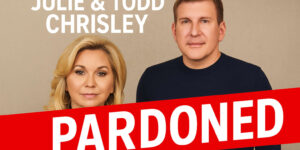3 Percent of America’s Population Is Overthrowing God’s Will
Even though the American public thinks the figure is much higher, less than 3 percent of the U.S. population identify themselves as gay, lesbian or bisexual, according to the first large-scale government survey measuring Americans’ sexual orientation, conducted by the Centers for Disease Control and Prevention.
“The National Health Interview Survey,” the government’s main tool for annually assessing Americans’ health and behaviors, found that 1.6 percent of adults self-identify as gay or lesbian, and 0.7 percent self-identify as bisexual.
The general public, due in part to the efforts of those aiming to normalize homosexual behavior in America, estimates that number to be much higher. A tenth of the population is a widely accepted figure, and in past surveys, a quarter of Americans thought that 25 percent or more of the population was homosexual.
“Today in America, we are changing millennia-old marriage laws, inundating television shows with multiple homosexual characters and pushing the public to embrace as accepted and healthy the behavior of less than 3 percent of the population,” said Tim Wildmon, president of the American Family Association. “Our culture, through the bullying, pressure and coercion of a lobby motivated by an extremely small population in America, has become focused on advancing the homosexual lifestyle as normal and even ideal.”
So far, those aiming to mainline homosexuality have done a good job tricking Americans into thinking the homosexual population is much larger than it really is.
According to a report in The Atlantic, Gallup polls in 2002 and 2011 found that the American public greatly overestimated the number of people who are gay or lesbian. In 2002, a quarter of those surveyed guessed a quarter or more of Americans were gay, lesbian or homosexual (the last of which was listed as a third option). By 2011, more than a third of Americans thought that 25 percent of Americans are gay or lesbian. Just 4 percent of those surveyed in 2011 and about 8 percent in 2002 correctly guessed that fewer than 5 percent of Americans are gay or lesbian.
According to the CDC survey, the overwhelming majority of adults, 96.6 percent, identified as straight, while 1.1 percent declined to answer, responded “I don’t know the answer” or said they were “something else.”
The survey also found that those in the gay community have higher rates of other unhealthy behaviors, with 26 percent of gays stating that they were current cigarette smokers (as opposed to 18 percent of the straight population), and one-third of the gay population reporting that they had consumed five or more alcoholic drinks in one day in the past year, compared to 22 percent of straight respondents.
The CDC, in a fact sheet on its website, also estimates that gay and bisexual men are more severely affected by HIV than any other group in the United States. According to the CDC:
- “Gay, bisexual and other men who have sex with men (MSM) represent approximately 2 percent of the United States population, yet are the population most severely affected by HIV.”
- “In 2010, young gay and bisexual men (aged 13-24 years) accounted for 72 percent of new HIV infections among all persons aged 13 to 24 and 30 percent of new infections among all gay and bisexual men.”
- Also in 2010, “gay and bisexual men accounted for 63 percent of estimated new HIV infections in the United States and 78 percent of infections among all newly infected men.”
- “From 2008 to 2010, new (HIV) infections increased 22 percent among young (aged 13-24) gay and bisexual men and 12 percent among gay and bisexual men overall.”
“There are very significant health risks associated with homosexuality that the public isn’t aware of,” Wildmon added. “We care about the health of all Americans, including people who are inclined to engage in homosexual behavior. People need to be informed that the homosexual lifestyle is not a benign alternative to heterosexual behavior. There are serious health risks, which is why we at AFA oppose homosexual behavior being normalized, as well as homosexual individuals being given special preference in the law.”
The annual CDC survey is highly regarded because of its sample size (33,557 adults between the ages of 18 and 64 for the most recent survey) and its methods, which include face-to-face interviews and some follow-up telephone queries.







































